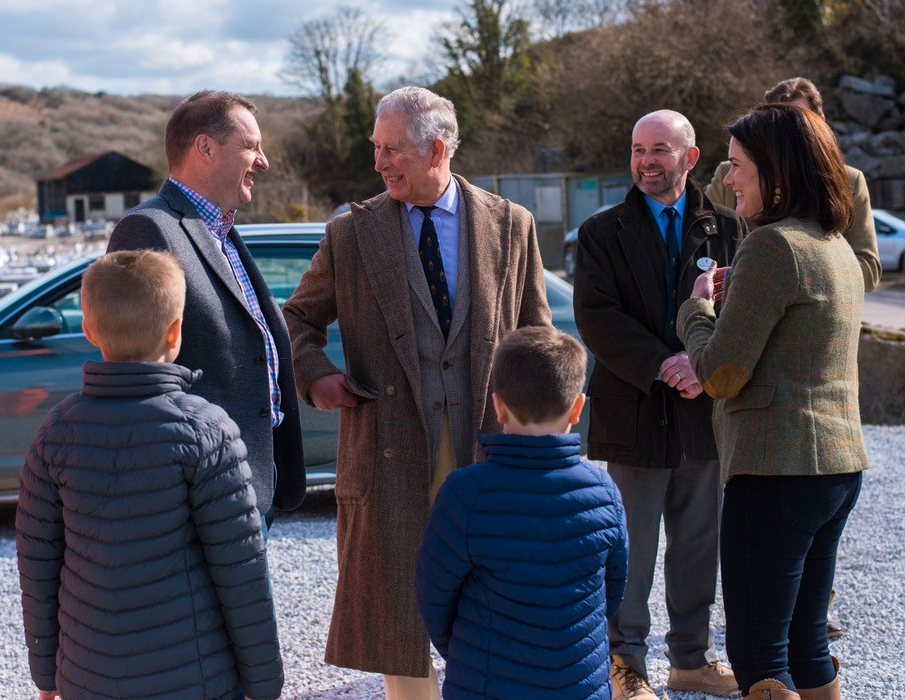Royal visit for DeLank
HRH Prince Charles, who is the Duke of Cornwall as well as the Prince of Wales, paid a visit to DeLank quarry in Bodmin, Cornwall, on 21 March to see the source of one of the county's great building stones, a granite that is being used in the 4,000-house development of Nansledan on Duchy land.
Like Poundbury on the outskirts of Dorchester in Dorset before it, Nansledan is being built according to Prince Charles' principles or architecture and urban planning, creating a diverse, human scale development of mixed price accommodation, commercial property, light industry and leisure to form a community rather than a dormatory.
DeLank Quarry was bought by Adrian Phillips and his wife Carina seven years ago (they also own Black Mountain Quarries in Pontrilas, Herefordshire). And both of them, with their two sons, Charles and Arthur, were at the quarry, along with Quarry Manager Ian Skinner and 13 people who work there, to welcome the royal visitor.
Adrian Phillips says it is totally coincidental that both his sons share Christian names with the Prince, whose full name is Charles Philip Arthur George.
Adrian says of the Prince: "He was in great spirits on the day and really seemed to enjoy his visit. We know we certainly did."
Prince Charles and his party were relaxed, and spent about an hour looking round the quarry and its processing plant. "I had to keep reminding myself who he is because I have only really got one mode and I kept nudging him. He brought the best out in everyone. It lifted our spirits and after he had gone we all went for a drink to re-live the visit."
The Nasledan development is currently taking between 40% and 50% of DeLank's annual production and is expected to continue to require the stone for the next 13 years. One stage in the year ahead will include 5km of kerbing.
And the development is taking a value engineering approach of accepting stone as it comes out of the quarry for a more natural appearance rather than setting limits on the variations that are acceptable.

